To teach a child to draw it is above all necessary to observe his progress and offer him new methods of experimentation. For the first five years of life, teaching must be limited to making available space, time, tools and encouragement. Later, you can propose to your child to teach him new skills, such as creating drawings from observation, practicing with perspectives, and drawing while maintaining the correct proportions. Avoid pushing children to change style or approach, do not criticize them and do not correct them. Instead, try to encourage them, observe and ask open questions that help your child's artist imagine more details and possibilities.
Steps
Part 1 of 3: Teaching Children Aged 15 Months to 5 Years
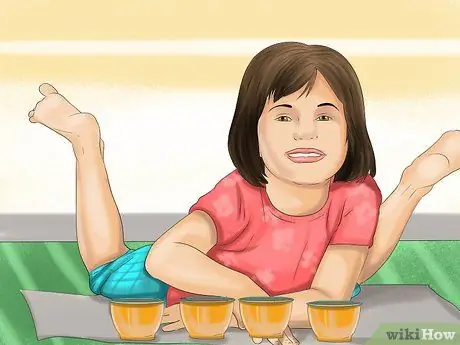
Step 1. Put the art in the program of the day
Artistic expression should be part of the time devoted to play. If you wish, you can reserve an area for art, so as not to get dirty everywhere. Use masking tape to attach paper to a hard surface to draw and smudge on, then make an apron out of old clothes. Attaching paper to a table can help a small child focus on the motions of the drawing, without having to hold it and move it. Buy large, washable crayons and markers that are easy to hold.
- Children start drawing by scribbling. Around the age of two, scribbling will become more controlled, repetitive, and your child may start holding crayons or markers between thumb and forefinger to make better use of them.
- At this age, offer your child a lot of different art materials. Don't just focus on drawing with tools - children can draw shapes in the sand, or shape clay and stick it on paper. Purchase washable paints, non-toxic clay, chalk, blunt-tipped scissors, and many types of paper; keep everything in one easy-to-access spot.
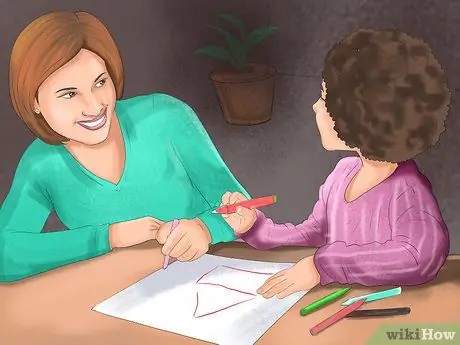
Step 2. Don't teach
Kids improve their basic motor skills with each scribble. They also develop creativity, inventiveness and expressive skills. Such small children do not need instructions, only appreciation. Sit down with your child when he draws, talk to him about his works, but don't try to be a teacher.
Avoid the urge to correct your child. Small children can draw purple grass, people floating in the air, and babies as big as houses. By correcting them you reduce their self-esteem and stop their natural progress
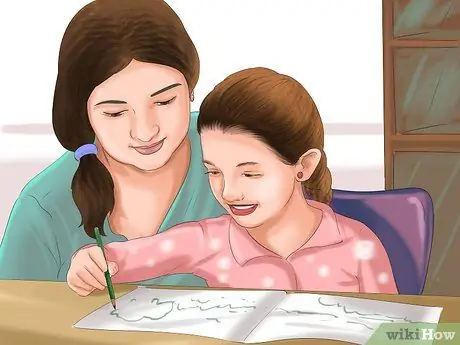
Step 3. Make observations
Instead of praising or correcting your child's works, observe them. Comment on the creative process, not the final result. When he draws, tell him: "Look at all the circles you are making! There are some small circles inside the big ones" or "I see that today you use green and orange". Explain what you like about a drawing: "That big sun makes me think of summer and the beach!" or "I like those trees with different colored leaves".
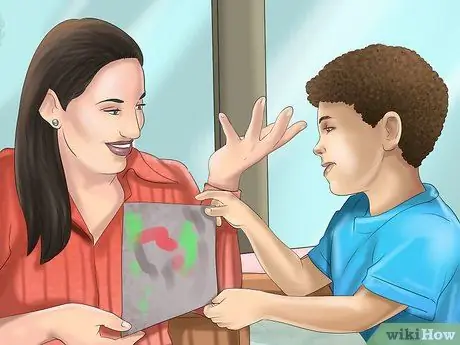
Step 4. Ask open-ended questions
Don't ask "What is it?" when your child shows you a drawing. Instead he asks "Do you want to tell me about your drawing?". If he is happy to talk about his work, continue with other questions and see if he adds any details. When children draw something concrete, they often imagine a story accompanying the figures. By asking them to tell you more details of the story you encourage them to draw more details.
For example, if you ask "What does the girl smell?", Your child will probably add her nose. If you ask "Does the dog feel lonely at night?" could draw other animals. Exchanges of this kind encourage the development of imagination, storytelling and drawing skills

Step 5. Use art as part of emotion processing
If your child is experiencing strong emotions, give him some paper and markers, or some clay. If he is having a tantrum, suggest that he draw an angry picture, if he is sad, a sad one. Art can help children process intense emotions that they cannot put into words. Giving a child the opportunity to engage in a creative activity that they own can help them feel in control.
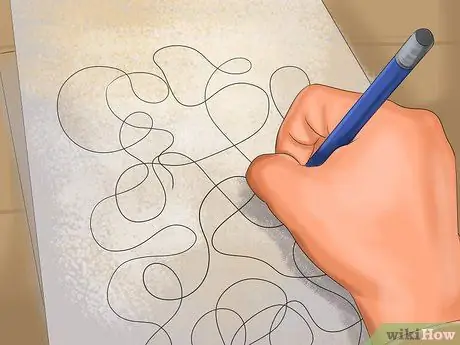
Step 6. Promote the prescription
Around 30-42 months of age, babies start drawing scribbles that represent words. As they get older, the scribbles become more complex - they may start using long and short strokes or drawing letter-like shapes along with actual letters. These drawings are an exciting signal, because your child understands that words can be written to convey meaning.
- Children will often tell you that a particular scribble "means" something or they may ask you to read what they have written aloud. Repeat the meaning of the scribbles that the child "reads" to you and ask for help in interpreting others.
- Let the children use the texts they write. Take them to the post office to send their "letters" (with a note explaining them) to relatives, to Santa Claus or to themselves.

Step 7. Display and keep their drawings
Posting your child's drawings around the house is a way to let him know that his work is interesting and important. Instead of praising every single design, put them on display. You don't have to do this for all the sheets he gives you: ask which drawings he would like to frame, or create a "gallery" in which you alternate his works weekly or monthly. Keep all your drawings in a folder so that you can see your progress.
It is more important to emphasize drawing practice and practice than to showcase your child's works. Framing some drawings cannot replace encouraging the development of his artistic skills
Part 2 of 3: Teaching Children between 5 and 8 years old
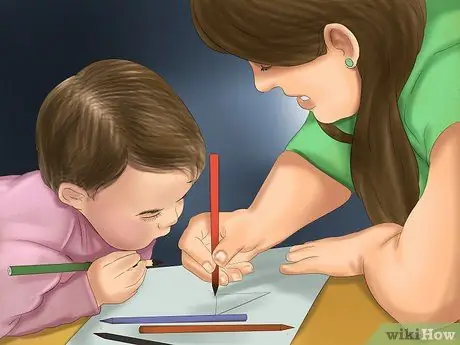
Step 1. Teach your child to observe the world around him
When he turns 5, you can start teaching him to draw something he sees. Tell him how to create drawings based on the appearance of the object he wants to represent, rather than from his imagination or ideas. To start this training, teach him to think of his drawings as exercises. Tell him he is learning a new type of drawing that takes a lot of practice and that he can practice as much as he wants.
- Give him pencils and lots of paper, discouraging him from using the eraser. Tell him that he can restart the drawing as many times as he wants and that he can erase the temporary lines when he's done.
- Don't force your child to draw from observation. Pushing him to a new stage of drawing may discourage him or slow his learning.
- Also give space to other types of drawing: drawings based on story and imagination, abstract drawings or drawings that represent emotions.
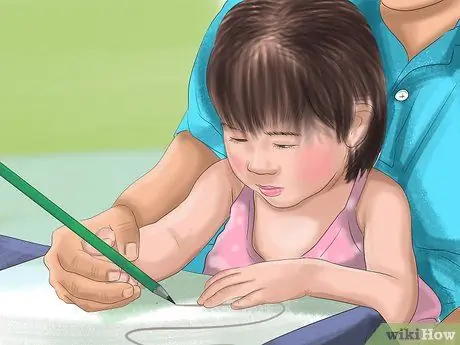
Step 2. Teach him to draw new objects
Around age 5 or 6, your child learns to follow patterns for drawing things. Instead of teaching him to observe things he has "already learned" to draw, such as houses, pets, or trees, let him choose something he has never tried to represent before. This way he won't be able to make use of habits he has already learned, but he won't be frustrated by having to "unlearn" something he already thinks he can do.
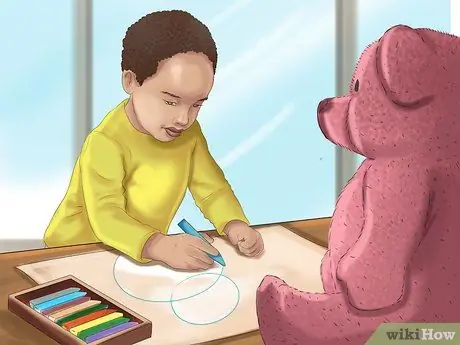
Step 3. Propose shape observation exercises
Explain to your child that he should try to draw an object from one side. Have him sit where he will draw and trace the edges of the object he sees with your finger. Now have him do it. Finally, ask him to draw the same shape in the air. He can do it first with his finger, then with the pencil.
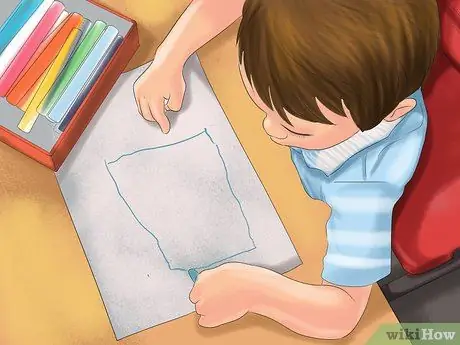
Step 4. Have your child draw without looking at the paper
Encourage him to keep his eyes on the object he is representing. Try putting a square of paper on his pencil over where he holds it so he can't see the line he's drawing. Get him to practice drawing straight lines at first, then move on to each part of the figure separately.
- Once he has practiced the lines, let him draw the entire shape. Keep practice line sheets handy, for reference or for other exercises in the future.
- Have your child practice drawing without ever looking at the paper.
- Ask your child to draw and look at the paper only when they have finished drawing a line. Let him monitor his progress, but encourage him to look down as little as possible.
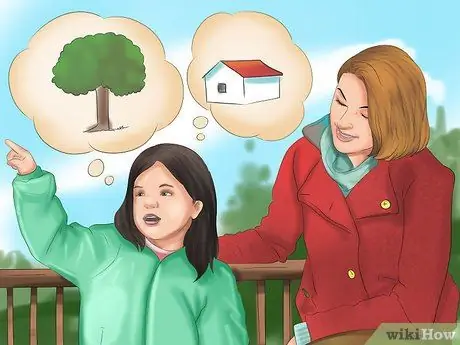
Step 5. Teach with comments and questions
Ask open-ended questions, as you would for younger children, but ask your child what he sees, not what he imagines. Try: "Which parts of the object are the lightest? Which parts are darker?", "Where does the line become a curve?". Compliment him on the lines and angles he represented correctly, then encourage him to add more details.
- You can say, "I see that you drew a very curved stem for the flower and that you made the ground darker. Now, do you see some smaller parts at the end of the stem? Where do they start and where do they end?".
- Don't show your drawings of an object and don't draw on your child's paper. Children are programmed to learn through imitation, but this process is not useful for learning to draw.
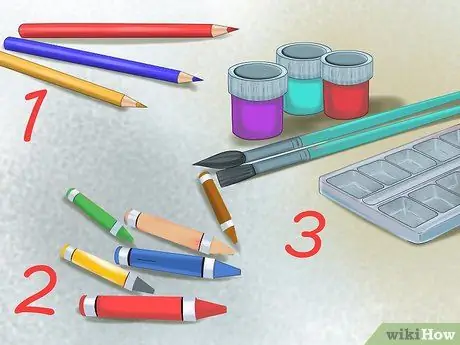
Step 6. Focus on one medium of expression at a time
Give your child the ability to practice with multiple tools. Between 5 and 8 he can draw with pencils, learning to shade and outline the figures. Show him different tools and let him experiment. Suggest variations: first we will draw with pencil, then with watercolors.
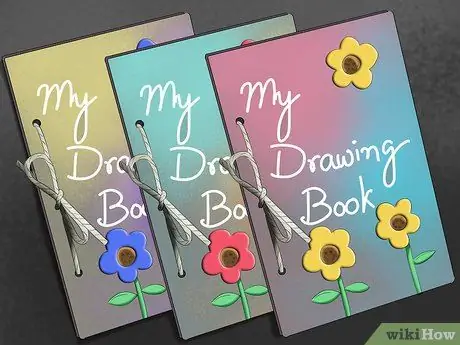
Step 7. Create a book
Children between 5 and 8 love to make up stories for their drawings. They may be interested in drawing sequences that tell a longer story. Encourage your child to do this and write short books. Help him bind them with staples or needle and thread. Once he has "published" his first book, put it on the bookshelf along with the others he owns.
Part 3 of 3: Teaching Children 9 to 11 Years Old
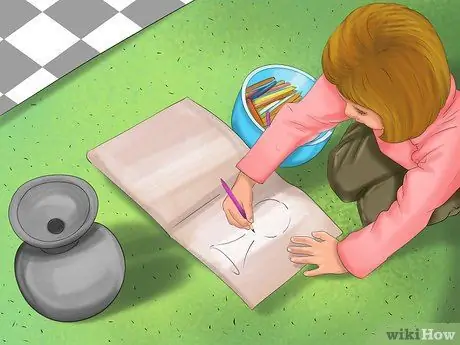
Step 1. Focus on spatial problems
Pre-adolescent children are particularly interested in the representation of perspective, glimpses and other information about space. They start by drawing horizontal lines, overlapping objects, and intricate details. Give your child spatial sequences, such as drawing an object from three different angles. Arrange geometric shapes in neutral colors next to each other so that she can practice shading.
Let me arrange the items in stacks and draw them

Step 2. Teach proportions with portraits
Basic anatomical proportions are one of the most difficult concepts to learn. People have a tendency to see the head bigger than it is, the eyes bigger and higher in the face. Teach the children the basic anatomical proportions of the face, then give them a mirror and ask them to draw themselves. Explain that they have to pose in turns and draw quick sketches.
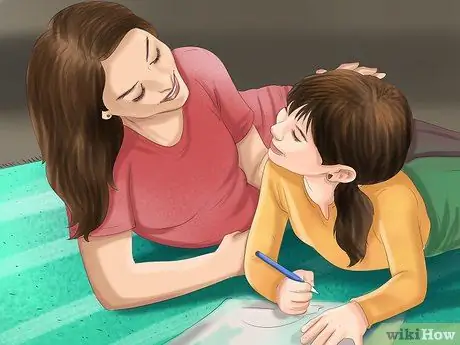
Step 3. Anticipate the crisis of self-esteem
Around the age of nine, children are very keen to draw realistically. They can get frustrated if their designs are not "right" and come to the conclusion that they are not suited to art. To resolve this crisis from the outset, he clearly explains that drawing is a skill that requires a lot of practice. Explain that the frustration arises because they are leveling up. If they think they are poor artists, it means that they have learned to see things they did not know before.
- Children around the age of 11 can stop drawing. Teach them age-appropriate skills and encourage them to try new methods so they don't lose motivation.
- Expand your child's art concept. One way to stop a decline in a child's desire to practice art is to teach him other forms of artistic expression. Drawing abstract elements, comics or projects can revive his self-esteem if he fails to get to the level of realism he would like.
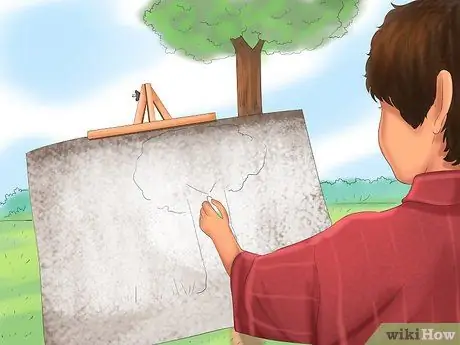
Step 4. Set challenges that require good observation skills
Children who have observed shapes and who have been trying to draw realistically for some time are ready to "unlearn" some concepts they have learned, as long as you don't make them feel ashamed when they give wrong answers. Show them a real tree, or take a piece of wood and ask them to observe all the colors of the bark. Challenge them to draw the tree without using brown, but rather by mixing other color markers in order to get the true shade of the wood.






